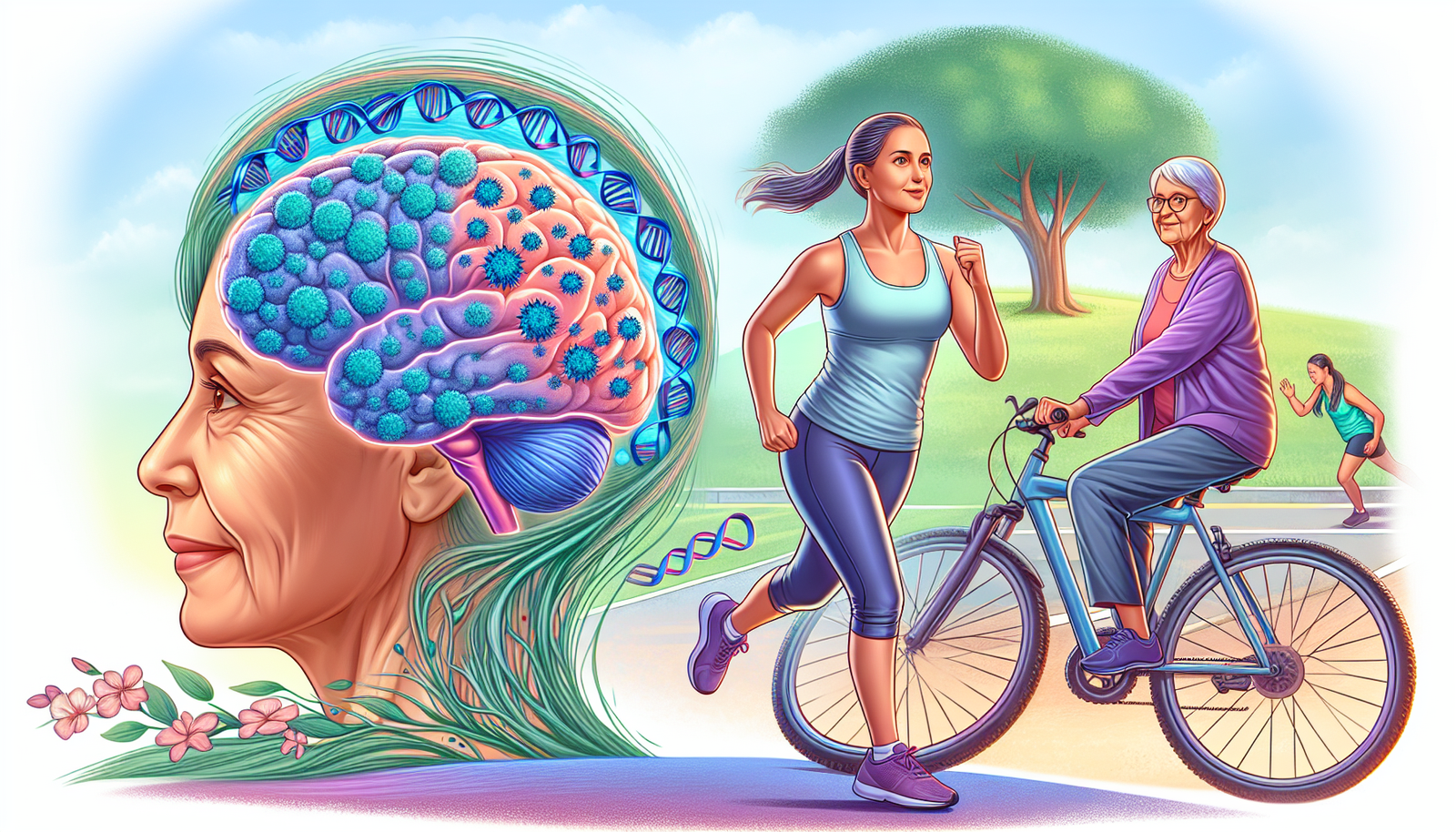
Boosting Middle Age Activity May Lower Alzheimer’s Risk
Understanding Alzheimer’s Disease and Its Risk Factors
Alzheimer’s disease is a debilitating form of dementia that affects millions of individuals worldwide. As our population ages, it becomes increasingly important to understand what factors contribute to its onset. While genetics plays a significant role, lifestyle choices, especially during middle age, are emerging as crucial elements in the fight against this devastating condition.
The Connection Between Beta-Amyloid and Alzheimer’s
One of the most significant markers of Alzheimer’s is the accumulation of beta-amyloid plaques in the brain. These protein fragments are thought to disrupt cell communication and lead to the eventual death of brain cells. Research indicates that the levels of beta-amyloid can be influenced by various factors, including:
- Genetics: Certain genetic markers increase the risk of Alzheimer’s.
- Lifestyle: Diet, exercise, and social engagement can play a role in managing amyloid levels.
- Age: The risk of developing Alzheimer’s naturally increases with age.
The Role of Physical Activity
As studies continue to explore the impact of physical activity on brain health, findings increasingly support the notion that being more active can significantly reduce the likelihood of developing Alzheimer’s disease.
How Physical Activity Influences Brain Health
Engaging in regular physical activity has numerous positive effects on overall health. Its influence on brain health is particularly noteworthy. Here are some ways in which exercise contributes to brain function:
- Improved Blood Flow: Exercise enhances blood circulation, facilitating better oxygen and nutrient delivery to brain cells.
- Neuroprotection: Physical activity promotes the release of brain-derived neurotrophic factor (BDNF), which supports neuron health and growth.
- Stress Reduction: Exercise is a proven method for reducing stress and anxiety, both of which can negatively impact cognitive function.
- Enhanced Memory: Regular physical activity can lead to improvements in memory and learning capabilities.
Middle Age: A Critical Period for Change
According to recent research findings, middle age appears to be a crucial period for incorporating healthy habits that may influence the risk of Alzheimer’s later in life. The implications of these findings suggest that the earlier individuals begin to engage in regular physical activity, the more resilient their brains may become to neurodegeneration.
Studies Supporting Activity in Middle Age
Recent studies have shed light on the correlation between increased physical activity during middle age and a reduced risk of Alzheimer’s. Here are some key takeaways:
- Longitudinal Studies: Follow-up research demonstrates that middle-aged individuals who increase their levels of physical activity show decreased beta-amyloid accumulation.
- Exercise Intervention: Programs promoting exercise among middle-aged individuals have successfully lowered the prevalence of Alzheimer’s biomarkers.
Practical Ways to Increase Physical Activity
Boosting activity levels doesn’t have to be daunting. Here are some practical strategies for incorporating more movement into daily routines:
- Set Achievable Goals: Start with small, attainable objectives—like a daily walk for 10 minutes—before gradually increasing duration and intensity.
- Find Activities You Enjoy: Engaging in enjoyable activities—whether dancing, swimming, or biking—makes the process more sustainable.
- Schedule Workouts: Treat exercise like an essential appointment by scheduling it into your calendar.
- Join Group Classes: Social classes can make workouts more fun while promoting accountability.
- Utilize Technology: Fitness trackers and apps can motivate and help monitor progress.
The Importance of a Holistic Approach
While physical activity is vital, it’s essential to consider a holistic approach to reduce Alzheimer’s risk. This approach includes:
- Nutritional Choices: A balanced diet rich in fruits, vegetables, whole grains, and healthy fats can support brain health.
- Mental Stimulation: Engaging in puzzles, reading, or learning new skills can enhance cognitive function.
- Social Engagement: Maintaining strong relationships and social networks may protect against cognitive decline.
Challenges to Increasing Physical Activity
While the benefits of physical activity are clear, many individuals face challenges maintaining an active lifestyle, especially as they age. Common obstacles include:
- Time Constraints: Work and family commitments can leave little room for exercise.
- Physical Limitations: Injuries or chronic conditions may hinder activity levels.
- Lack of Motivation: Finding it difficult to stay motivated can hinder exercise routine adherence.
Overcoming Barriers
To overcome these barriers, individuals can:
- Prioritize Wellness: Recognize the significance of health and make it a priority in daily life.
- Seek Support: Involve friends, family, or exercise partners to enhance motivation.
- Consult Health Professionals: Seek advice from physical therapists or trainers to create personalized fitness plans.
Conclusion
In summary, emerging evidence suggests that increasing physical activity during middle age may significantly lower the risk of developing Alzheimer’s disease in later years. By understanding the role that lifestyle factors—particularly exercise—play in brain health, individuals can make informed choices that promote not only longevity but enhanced cognitive function.
Whether through structured exercise regimens or simple lifestyle adjustments, boosting activity levels may be one of the keys to a healthier, more vibrant future free from the shackles of Alzheimer’s disease.
Take charge of your brain health today—your future self will thank you!

